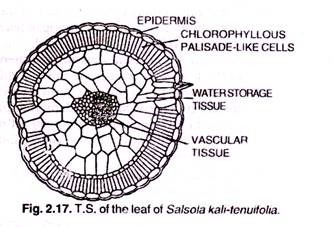ADVERTISEMENTS:
In this article we will discuss about the sex determination in humans.
The problem of sex determination is an interesting one for which many theories have been advanced but the fundamental differences in sex are not so great as might be imagined, as the organs of the one are often represented as rudiments in the other, the differentiation coming about mainly through division of labour between male and female in the production and nutrition of offspring.
The actual determination of sex resides in the germ itself and is established at conception, the development of sexual characteristics, on the other hand, may well be due to the influence of certain hormones secreted by the endocrine glands.
ADVERTISEMENTS:
The latter derangement sometimes gives rise to sexual anomalies, such as pseudohermaphroditism in higher vertebrates, even in man. Occasionally there occurs true hermaphroditism—a combining of the sexes in one individual. Among animals this is rare and is almost invariably found in sedentary or semi-sedentary types.
For example, the European oyster is hermaphroditic, while its American ally is not. Barnacles and sedentary Crustacea are often bisexual and sometimes there may be seen within the body of the hermaphroditic female a small—so-called complemental—male, evidently in process of elimination from the race.
The snail and earthworm, which, though not sedentary, have very limited powers of movement, also have the sexes combined, while in plants separate sexes are the anomaly, hermaphroditism being the rule.
Among invertebrates the proportion of the sexes varies enormously, among vertebrates, on the other hand, they are generally nicely balanced. In the hive bees, as we have seen, unfertilized eggs invariably produce males, whereas among aphids parthenogenesis gives rise to females only until autumn, and then to both sexes, while the fertilization of the winter egg, as in the bees, produces females only.
ADVERTISEMENTS:
Here the appearance of males—and the same is true of wasps and many other insects—is a harbinger of cold and inclement weather and may sometimes be postponed by artificially continued uniform conditions. For example, the scale insects found in state of nature normally produce the males toward the end of the growing season; and this is also true of some types resident upon hot-house plants.
On the other hand, certain hothouse species far from their native habitat have been observed for years without discovery of a single male.
The sex of the future human being in decided at the moment of conception. Sex is determined simply by the sort of spermatozoon, X-bearing or Y-bearing, which happens to fertilize the ovum. It is now known that in man the Y chromosome is strongly sex determining.
The female human produces only one sort of ovum —each containing 22 autosomes and an X chromosome. The male human, on the other hand, produces two sorts of spermatozoon, those containing 22 autosomes and an X chromosome; and other those containing 22 autosomes and a Y-chromosome.
There are two possibilities when fertilization takes place:
1. An ovum bearing, of course, an X- chromosome may be fertilized by a spermatozoon also bearing an X chromosome; the result is an individual bearing 44 autososomes and two X-chromo- some—that is a female.
2. An ovum bearing an X-chromosome may be fertilized by a spermatozoon bearing a Y-chromosome; the result is an individual bearing 44 autosomes and one X- chromosome and one Y-chromosome that is a male.
More recently it has become clear that only a small region of the Y, perhaps a single gene, is responsible for initiating the sequence of events that lead to testis formation and, hence, to male development. This gene is known as TDF (Testis determining factor).
In the absence of this gene (TDF) female development ensures. The sex-determining region of the Y-chromosome was defined by analysing natural human variants: individuals with two X-chromosome who develop as males: and individuals with an XY constitution who develop as females. About one in 20,000 men is an XX male; they are sterile, and consequently have been identified by presentation at fertility clinics.
ADVERTISEMENTS:
Most of these XX males are now known to carry a small part of the Y-chromosome. Conversely, some XY females carry small deletions of the Y. The most informative of all the individuals so far examined are one XY female who appears to carry all but 140 kb (Kilo base) of the Y, and one XX male who carries less than 350 kb of the Y.
Functionally important sequences within this region of Y (which is known as interval sequence or IA) would be expected to show evolutionary conservation and Y specificity in other mammalian species. The TDF containing portion of the Y chromosome has been sequenced by Page et al (1988) and according to them in one reading frame there is an uninterrupted coding sequence of 404 amino acids composed of 13 repeats of 28-32 residues.
The structure is unmistakably that of a “finger protein”, within each repeat there are a pair of cysteines and a pair of histidines which together with a co-ordinated Zinc atom are expected to create a nucleic acid binding domain or “Zinc finger”.
ADVERTISEMENTS:
The nature of the predicted protein makes it likely that TDF exerts its initial effects at the level of a single cell. According to Sinclair et al (1990) TDF gene is present in a short segment of the Y chromosome adjacent to the pseudoautoso- mal boundary.
The span of this gene within a maximum of 60 kilobases from the boundary.

